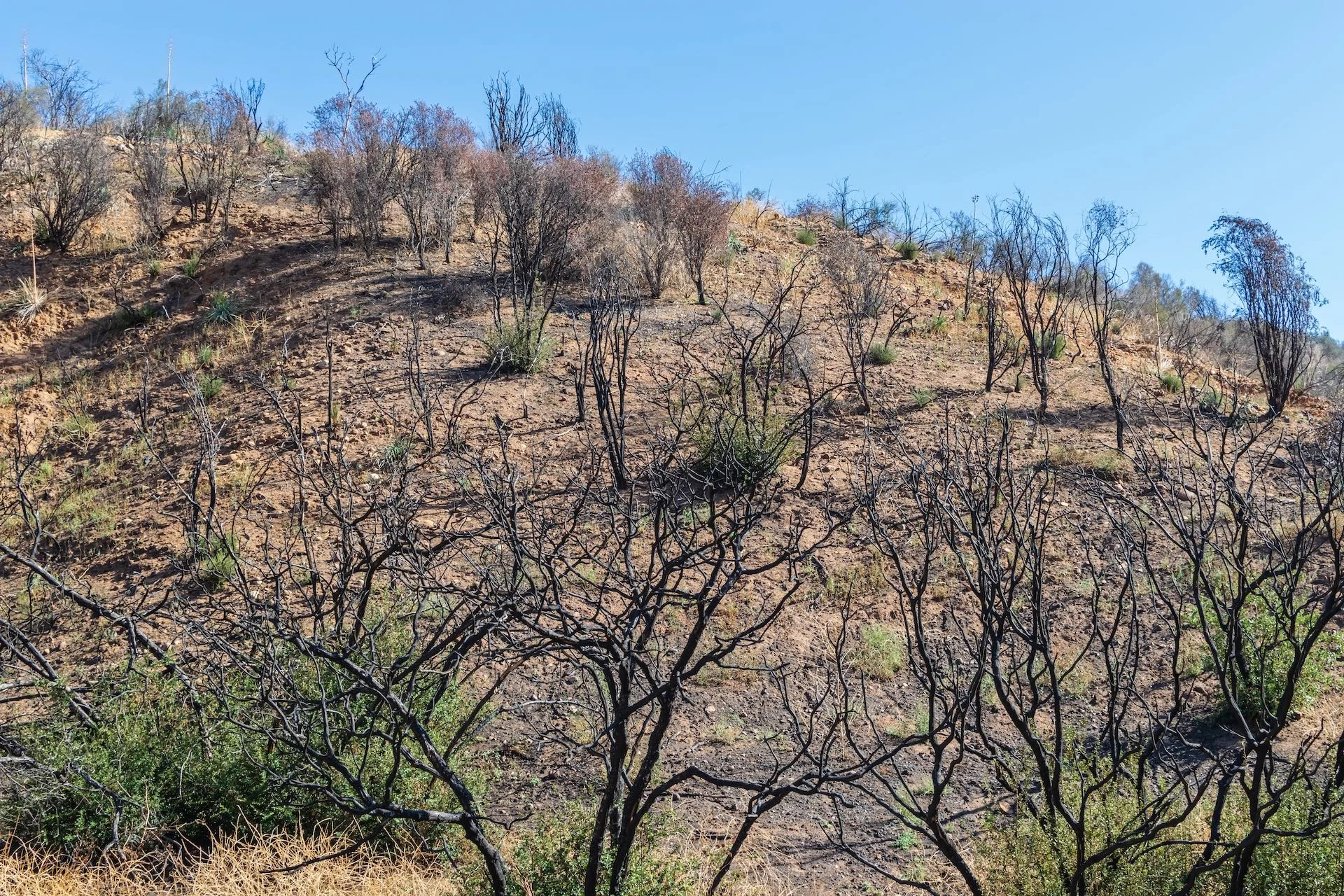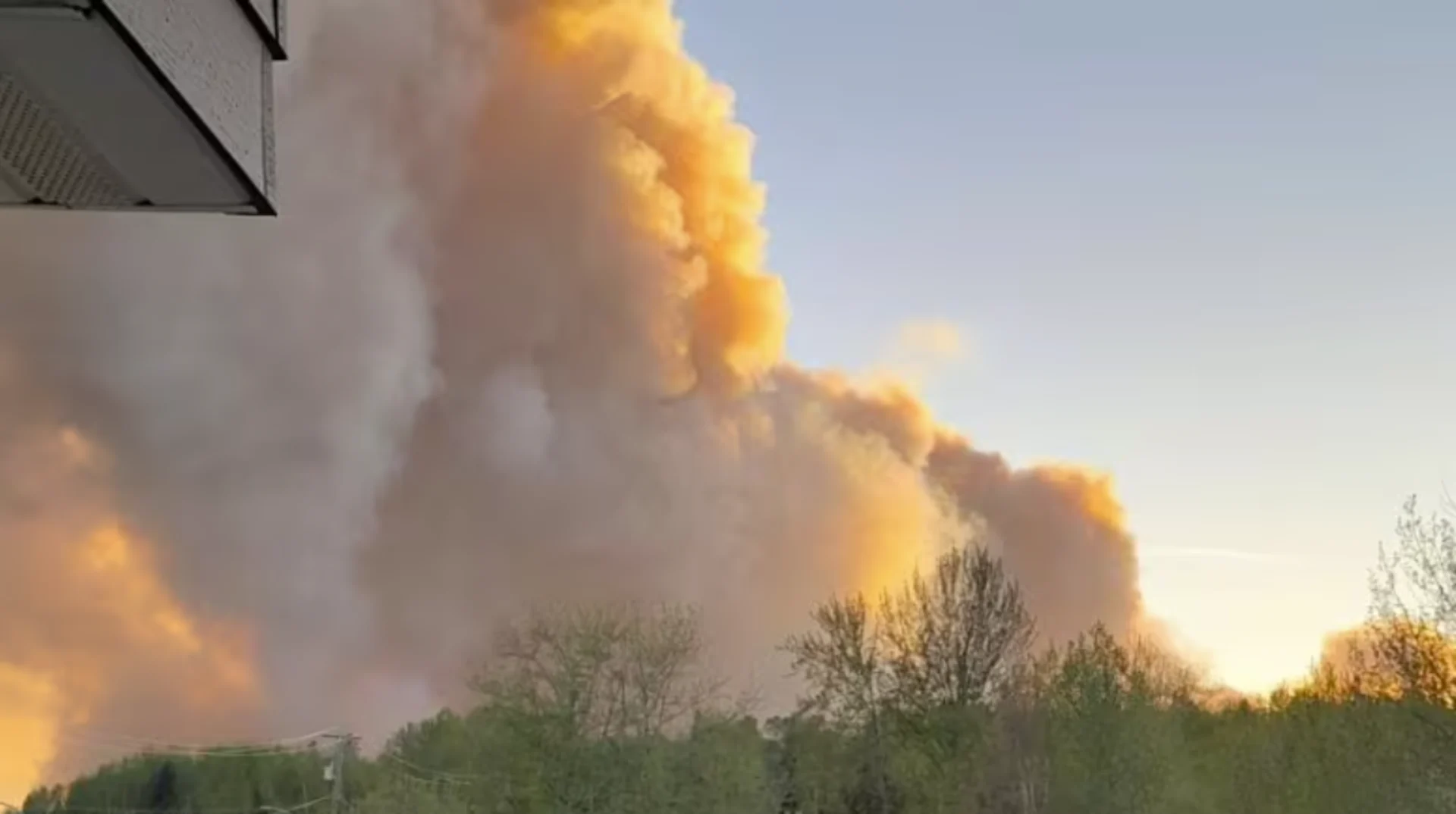
Large wildfires can create decade-long heat island in the wild
Long after the flames have gone out, the effects of large, climate-fuelled wildfires endure in Canada's boreal forest, making the ground warmer than normal more than a decade later, a study shows.
The new research, published today in the journal Nature, looked at the world's northern latitude forests, using satellite data and on-site observations to measure surface temperatures in the years after fire events.
The main conclusion? The larger the fire, the longer those warmer temperatures lingered.
RELATED: Canada's 2024 wildfire season shaping up to be second-worst in 20 years
"We found a widespread warming effect one year after the fire events," said Xianli Wang, one of the study's co-authors and a fire research scientist at the Canadian Forest Service.
"This effect actually lasts quite long. We have 14 years of data and we do see the residual effects even lasts that long."
The problem with large fires — which Canada saw during the record-breaking 2023 season — is that the burned areas are left blackened, reducing how much sunlight and heat is reflected, akin to an urban heat island in the middle of the forest. Wang said the evidence of warming was seen from summer to summer, rather than during the snow-filled winter months.

(Department of Natural Resources and Renewables/X via CBC)
On the other hand, smaller fires leave the landscape patchier, rough and with "a lot of variations in height," allowing trees to break up the flow of air to better dissipate heat, Wang says.
The study adds to research that suggests wildfires are not only a product of climate change but also help produce the conditions that lead to more of them, said Mike Flannigan, a prominent wildfire scientist at Thompson Rivers University in Kamloops, B.C.
"My argument has always been: the warmer we get, the more fire we see. But the other part is the more fire we see, the warmer we get," said Flannigan, who was not involved in the study.
Benefits of broadleaf
While the research offers a worrisome look at the effects of large wildfires, it also points to a potential solution: more deciduous or broad-leaved trees.
It found areas dominant in these trees (or mixed with coniferous species) had little to no warming effects years later — suggesting these species could play a helpful role by limiting the spread of a wildfire.

(Submitted by Tony Capot-Blanc via CBC)
"There is decent science out there that says deciduous trees, when a fire roars along, if it hits a [group] of, say, trembling Aspen, it'll actually dwindle down and sometimes even go out," said Randall van Wagner, head of the national greening program at Tree Canada.
Using these trees — which carry more moisture than coniferous trees — as fire breaks is a known strategy.
Last year, the community of Behchokǫ̀, N.W.T., was forced to evacuate as an intense wildfire hit, causing damage and burning down homes.
Tree Canada is working with the local government to plant hundreds of thousands of deciduous trees in the coming years to help reforest in a more resilient way.
But experts, including van Wagner, warn against thinking of this as a silver bullet, as many factors — including availability of the right tree species and the workforce needed to plant them — have to come together for it to be possible.
Regeneration is commercially focused
Megan de Graaf, forest program director at Community Forest International, a New Brunswick-based charity, says another problem is that re-planting trees has been focused on commercial purposes.
"We've had decades, if not centuries, of a certain style of management that has prioritized timber production," said de Graaf.

Megan de Graaf, forest program director at Community Forests International, stands among the ferns at Robinson Conservation Forest, in Cambridge-Narrows, N.B. (Zach Melanson/Community Forests International)
Her expertise is in the Wabanaki forest region in Eastern Canada, which historically had a mix of trees. Over the years, it's shifted to be more boreal.
"So we have now a forest composition and a forest type here that is more susceptible to the effects of things like fires because of that disproportionate amount of cold-adapted boreal species," De Graaf said.
De Graaf advocates for a climate-focused approach, which could mean letting a forest naturally regenerate, but then altering some parts of it to be more fire-resilient.
'Fuel is fuel is fuel'
The complexity of wildfires and the conditions that create them make adding more deciduous trees only a "partial solution" to the growing problem of wildfires, according to Flannigan.
"Yes, they're less flammable, less intense, but they do burn," he said of broad-leaved trees.
"When things are extreme, fuel is fuel is fuel. It dries out. It will burn."

How much has burned so far this year in Canada. Source: Canadian Wildland Fire Information System (Graeme Bruce/CBC)
As an example, Flannigan cited British Columbia, where the five worst wildfire seasons on record have all been since 2017. Across the country, the area burned this season is once again well above the norm.
"Fire weather" — the hot, dry conditions made more likely in a warming world — is the ultimate determinant of wildfires, said Flannigan, who has been sounding the alarm for years on how climate change would lead to more severe wildfire seasons.
"In British Columbia, it's the fire weather. We're seeing more and more extreme fire weather," he said.
"More communities are going to be impacted by it and we best be prepared."
WATCH: 'Zombie fires': As scary as they sound and an increasing risk in Canada
Thumbnail courtesy of Getty Images-1063980646.
The story was originally written by Anand Ram, Benjamin Shingler and published for CBC News.










